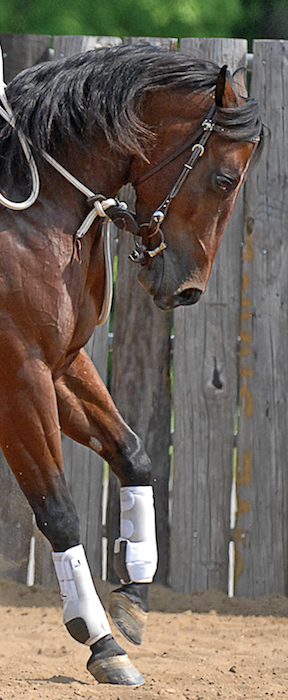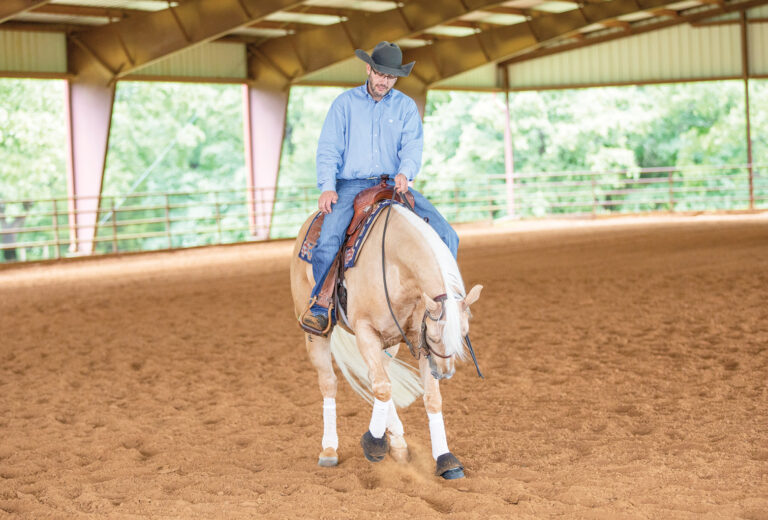
When you find yourself riding a hot, nervous horse, what should you do in response?
One thing not to do: attempt to hold him in.
“The old saying is true,” says Placerville, California, trainer and riding coach Paula Zdenek. “The more you try to contain a hot horse, the hotter he gets.”
Paula, who’s helped me with my own horsemanship over the years, has trained for the public over four decades. She learned from legendary reined cow horse master Bobby Ingersoll, and even edited his book, The Legendary California Hackamore & Stock Horse.
Paula says the key to calming a hot horse is to take advantage of an equine’s natural singlemindedness.
“He can think of just one thing at a time. So you want him to focus on you and what you’re asking of him, not whatever’s making him antsy.”
To accomplish that, she recommends these strategies:
• Give him a job. Using cues he’s familiar with, get him busy doing a maneuver or activity he knows well. “Now’s not the time to try something new,” she adds. Simple bending can be effective, as can a long, brisk trot to settle both his mind and his muscles. “If I’m trail riding and on decent ground, I usually go for a long trot to let the horse burn off some of his nervous energy.”
• Ride quiet. Every sudden move you make–whether it’s a quick slide up the reins or grabbing with your legs—can make the situation worse. “An excitable horse reacts quickly to whatever you do, and gives back even more energy than you gave him,” explains Paula. To avoid this vicious circle, “sit heavy in the saddle, keep your hands quiet, and hold your legs off his barrel unless you’re specifically cueing him.”
• Hush your voice. If you use your voice, keep it low and slow. “I drop mine an octave or two and slow it down to match my body language,” says Paula. “Ultimately, calm in the rider equals calm in the horse.”
She adds that if your horse is excited because he’s herd bound (reluctant to leave or be left by a group of horses), then “that needs to be dealt with specifically and in a safe environment” (see links below).
But if you can remember these key strategies, you can learn to calm an excited horse in most situations.
FOR MORE RELATED TO THIS TOPIC:
Retraining a herd-bound horse.
Preparing for safe trail rides.
Soothing a nervous show horse.






